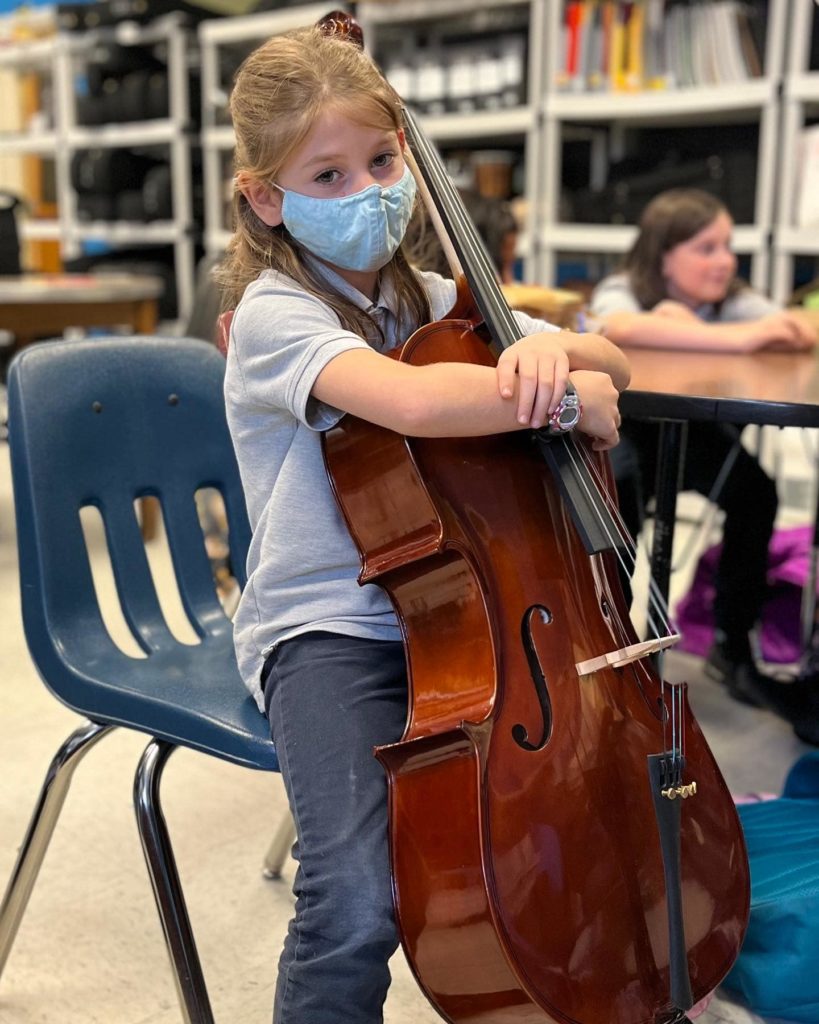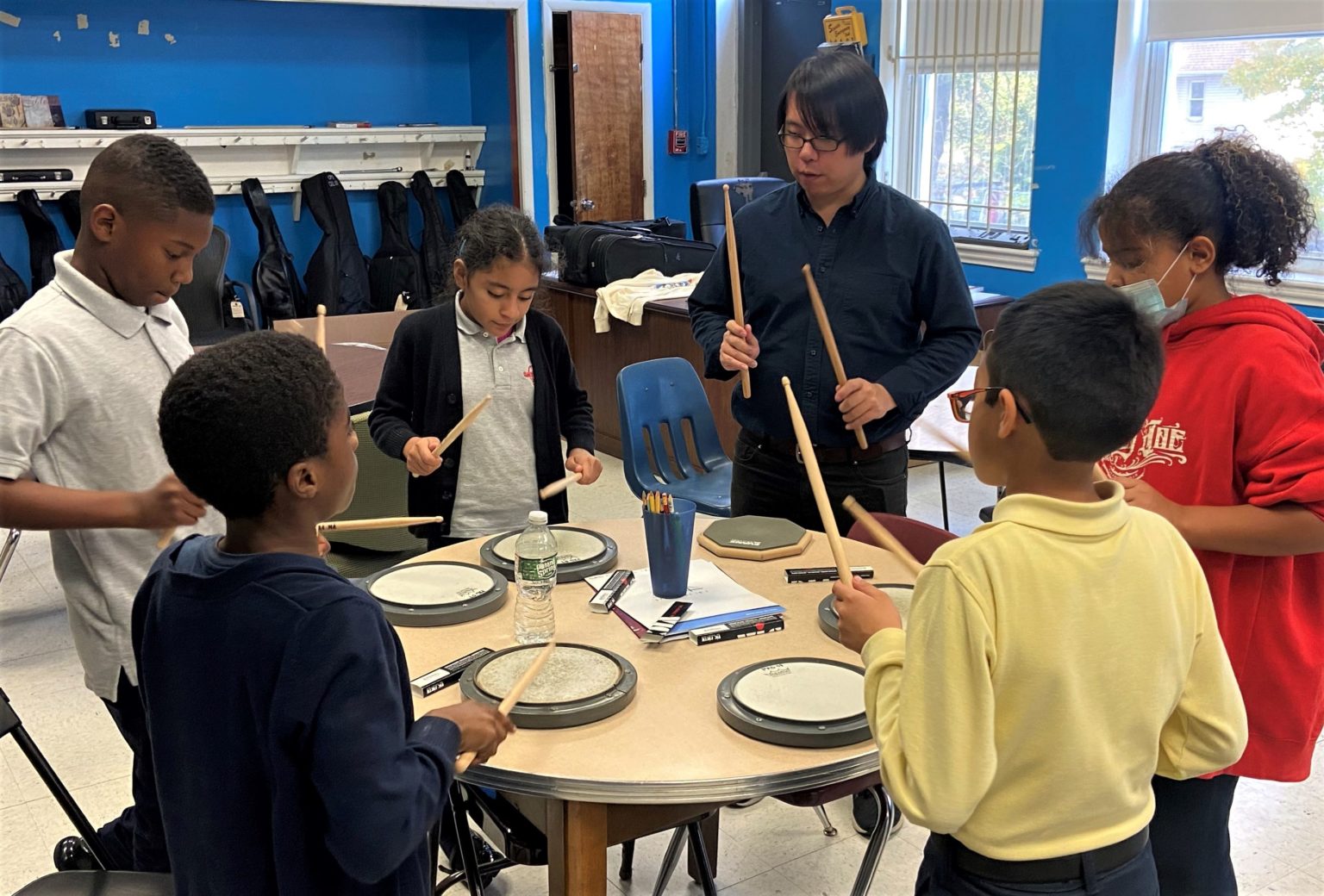Every Tuesday after school, you can see and hear budding percussion players like these using practice sets to learn to play the snare drum. Down the hall, children are learning to play woodwinds: clarinet, flute, and saxophone. Another group is practicing brass instruments: trumpet and trombone. On Wednesdays, the string players learn to play violin, viola, and cello.
All this is thanks to Symphony in C, a professional orchestra that facilitates the afterschool music program of Catholic Partnership Schools. The Domenica Foundation has helped to fund this music program since its inception in 2013.
When children master their instruments, they join the wind ensemble or the string ensemble. In the spring, they all come together in an orchestra that performs for an enthusiastic audience of families and teachers.

But first they have to learn to play. “For most instruments, it takes significant time to learn to create any sound at all, much less one that sounds like music,” said Jocelyn Moore, vice president of education and community outreach at Symphony in C.
“After several months, every student or instrument group gets to an ‘aha!’ moment,” Jocelyn said. “They can string several notes together to form a simple melody—think ‘Mary Had a Little Lamb.’ And then things really take off!”
Besides the opportunity to create something in collaboration with others, learning to play an instrument has many social-emotional benefits. With Symphony in C, children learn that perseverance and hard work pay off. Furthermore, there’s evidence that learning music influences brain development, making connections that have lifelong effects on young musicians’ ability to process language, store memories, and focus on difficult tasks.
“We’re thrilled to sponsor this program that has so many benefits for kids,” said Elena Piperno, Domenica Foundation director. “We know that most won’t continue playing through their teen years. And that’s fine! They’ve gotten the benefit of learning that they can play a role in something bigger than themselves.”
Jocelyn cited the example of a group of violin students who were in sixth grade when the pandemic hit.
“They couldn’t get back to in-person lessons until they were in eighth grade,” she said. “But they stuck with it through all the virtual learning. When they came back last year, they were amazing mentors to the young new students who joined the program.”
One such new student is a young violinist whose mom reports that, once the ensembles started rehearsing in the spring, she practiced at home every day. She also attended Symphony in C’s two-week summer music camp, and Jocelyn set her up with private lessons in the summer with one of the teaching artists. “Once she gets another year of study under her belt,” said Jocelyn, “we hope to involve her in the Symphony in C Youth Orchestra to further her musical growth.”
In addition to group lessons on their instruments, students are learning music theory in the fall semester. In the spring, they’ll start playing in ensembles. We can’t wait to hear their learning pay off when they perform their concert in the spring!

